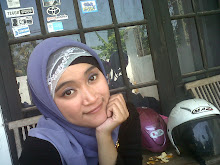Filsafat
adalah olah pikir yang reflektif, maka pada perkuliahan filsafat ini juga
reflektif. Refleksi itu artinya kenali, mengerti, ungkapkan kembali dengan
kalimat sendiri. Filsafat itu pada intinya mempelajari tata cara, seperti
halnya dengan beribadah, tata cara beribadah itu adalah ibadah itu sendiri.
Maka sebetulnya beribadah itu cara mempelajari tata cara beribadah.
Manusia
yang beradab adalah manusia yang mengenal tata cara, manusia dikatakan tidak
beradab jika tidak mengenal tata cara. Kendala yang menjadi penyampaian materi
adalah keadaan, keadaan merupakan sifat dari hidup, hidup manusia tidak bisa
lepas dari keadaan, saking pentingnya keadaan sehingga dalam filsafat bisa
didefinisikan bahwa hidup itu sebenarnya adalah keadaan. Keadaan itu sendiri
kaitannya dengan potensi dan fakta. Misalnya dalam pelaksanaan KKN-PPL, fakta
yang dialami adalah mahasiswa telah melakukan praktik mengajar, mahasiswa
menyusun laporan KKN-PPL, dll. Pada filsafat, adab yang pertama yaitu bahwa
filsafat itu olah pikir.
Potensi
adalah keinginan, yang tentunya masih dalam perjuangan, kita harus berani
menghadapi kenyataan karena bukan filsafat namanya kalau kita tidak berani
menghadapi kenyataan. “Mengapa kita harus berfilsafat?” Pertanyaan ini setara
dengan pertanyaan “Mengapa kita harus berpikir?”. Selama kita menunjuk pikiran
maka selama itulah kita mendapat petunjuk berfilsafat, karena filsafat itu adalah
olah pikir. Berfilsafat itu bisa sendiri, tidak seperti berdagang yang harus
ada pembeli, mengajar yang harus ada muridnya, dll. Oleh karena berfilsafat itu
bisa sendiri maka anda harus bisa membangun sendiri filsafat. Berfilsafat cukup
berbekal dengan dua macam, yang pertama berpikir atau logika/berpikir
kritis/rasional. Bekal yang kedua yaitu pengalaman/pengalaman hidup. Berfilsafat
harus bisa berpikir dari hal yang sepele, namun kita harus hati-hati karena di
atas filsafat adalah spiritual.
Metode
berfilsafat dalam hal tertentu juga sebagai metode berspiritual, juga
menyangkut metode keilmuan, juga menyangkut metode hidup sehari-hari atau
secara keseluruhan dirangkum menjadi satu kesimpulan metode mempelajari
filsafat yaitu dengan cara metode hidup, karena filsafat itu sendiri adalah
hidup. Filsafat antara orang satu dengan yang lain itu berbeda. Metode hidup
adalah yang seperti kita kerjakan selama ini, sejak lahir hingga usia kini kita
hidup seperti apa saja. Ada membaca, ,mendengar, menulis, berkata, menerapkan,
bertanya, berdoa, dll. Perlu diketahui belajar berfilsafat juga diiringi dengan
berdoa, dan untuk berfilsafat kita harus mempunyai banyak pertanyaan. Saking
pentingnya pertanyaan dalam berfilsafat sampai bisa dikatakan sebenar-benarnya
berfilsafat itu adalah mengutarakan atau mengajukan pertanyaan. Dalam
perkuliahan ini diharapkan mahasiswa dapat berfilsafat dengan baik, yaitu ada
bertanya, mendengar, dll.
Secara
pikiran manusia, hidup itu jika dinaikkan menjadi spiritual yaitu yang paling tinggi.
Artinya kita sebagai orang timur/orang Indonesia yang berpancasila, orang
beragama, itu mengandung pengertian bahwa spiritual itu kedudukannya paling
tinggi, tetapi juga paling mendasar. Setiap hal dalam hidup kita harus dalam
perangkat yang berkualitas, jika tidak akan berbahaya. Berfilsafat merupakan
hak setiap orang. Metode hidup secara spiritual sudah ada garis-garisnya secara
absolute. Tuntunan melalui kitab suci, sunah-sunah Rosul, hadist, dan
seterusnya kemudian diturunkan menjadi norma-norma. Tetapi selama kita masih
memikirkannya, pikiran manusia itu adalah urusan dunia, kalaupun dia masih bisa
memikirkan akhirat.
Objek
filsafat adalah segala yang ada dan yang mungkin ada, dimana kita bisa mencari
yang mungkin ada. Misalnya adalah kita tidak mengetahui nama cucu Bapak
Marsigit, apakah kita ingin tahu namanya? Jika kita belum tahu namanya maka
nama itu masih mungkin ada di dalam pikiran kita. Namun setelah kita tahu
namanya, maka nama cucu beliau menjadi ada dalam pikiran kita. Segala yang belum
kita ketahui itu sifatnya masih mungkin, sedangkan yang kita ketahui itu
sifatnya sudah ada.
Alat
yang dipakai untuk belajar filsafat adalah bahasa, namun tidak sembarang bahasa
yang dipakai adalah bahasa analog. Analog itu tidak sekedar kiasan, kiasan itu
jika diturunkan lagi bentuk operasionalnya menjadi sindiran, jika sindiran, itu
sudah bermuatan negatif.
Analog
dari hati adalah spiritual. Setingi-tinggi ilmumu, secanggih-canggihnya
teknologimu jangan sampai kita belajar filsafat yang dimana itu menggoyahkan
imanmu. Musuh dari filsafat adalah salah paham, maka dalam pembelajaran
filsafat harus dengan banyak bercerita supaya kita paham. Sebagai saran, jika
kita ingin berfisafat satu maka berspiritualah sepuluh, jika ingin berfilsafat
dua maka berdoalah dua puluh, dst. Hal ini supaya sejauh-jauhnya kita
menggembara filsafat harus tetap bisa kembali. Sekali kita tidak bisa kembali
maka selamanya juga kita tidak bisa kembali.
Dalam
pengalaman Bapak Marsigit, ada orang bertanya kepada beliau “Apa hubungannya
Matematika dengan Doa?”. Yang sangat mengejutkan adalah orang itu menjawab
tidak percaya dengan Tuhan ketika Bapak Marsigit bertanya akan hal itu. Pak
Marsigit apa alasan dia tidak percaya, dia menjawab “because I don’t understand” atau karena saya tidak mengerti.
Kemudian Pak Marsigit menjelaskan bahwa seharusnya untuk mencari dan mengerti
Tuhan itu tidak hanya mengandalkan pikiram, tapi harus mengandalkan hati.
Karena Tuhan itu ada di hati kita. Itu semua merupakan suatu adab.
Tuhan
telah menciptakan ciptaan-ciptaan sebesar-sebesarnya untuk kepentingan manusia
maka jika kita akan belajar metode hidup yang paling menonjol adalah belajarlah
seperti wataknya bumi. Hidup bahagia dunia dan akhirat kalau dia seimbang,
seperti seimbangnya bumi. Bumi itu seimbang karena dia berputar pada porosnya
dan bergerak mengelilingi matahari, maka agar kita hidup seimbang kita harus
mempunyai ikhtiar di dalam hidu kita sendiri, ketika kita berdoa dalam hati itu
namanya berotasi, maka kita dapat hidup seimbang, maka kita juga harus
berikhtiar mengarungi hidup kita, kemudian hidup dikatakan bahagia jika kita
seimbang.
Filsafat
paling tinggi di Timur adalah filsafat keseimbangan. Baik buruknya seseorang
kalau orang itu dalam keadaan seimbang atau tidak, maka oramg jawa ada yang
mencari menantu misalnya dengan bibit, bebet, bobot. Jangan salah paham, bukan
wajah cantik yang dilihat, tetapi apakah anak ii mempunyai potensi keseimbangan
atau tidak, itu bibit yang baik. Jika orang tidak punya bibit keseimbangan maka
dia punya kepribadian yang terbelah-belah dan akan menjadi susah dan itu
menjadi sumber ketidakbahagiaan di dunia maupun akhirat. Inerbeauty muncul dari
pancaran wajah yang karena pancaran kepribadian.
Pertanyaan:
Bagaiamana caranya jika kita ingin berfilsafat terhadap sesuatu tetapi
pengalaman hidup kita masih belum mencukupi untuk hal/sesuatu tersebut?



